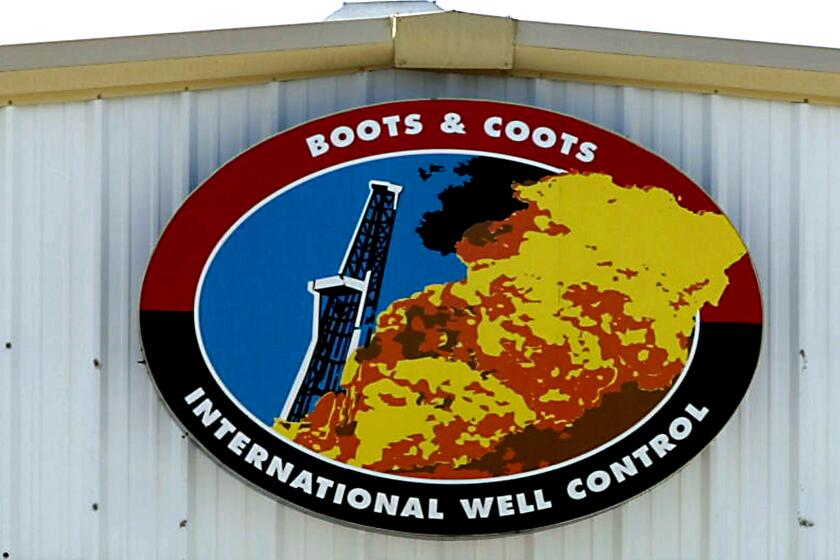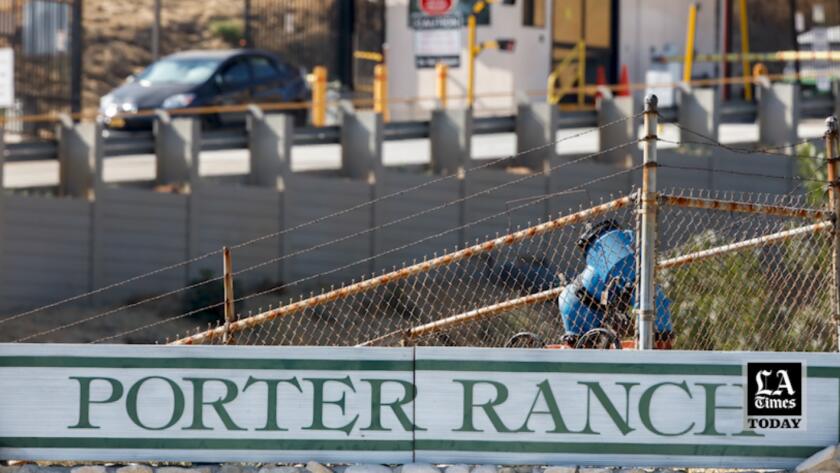‘My mind is just blown.’ California allows more gas storage at Aliso Canyon leak site
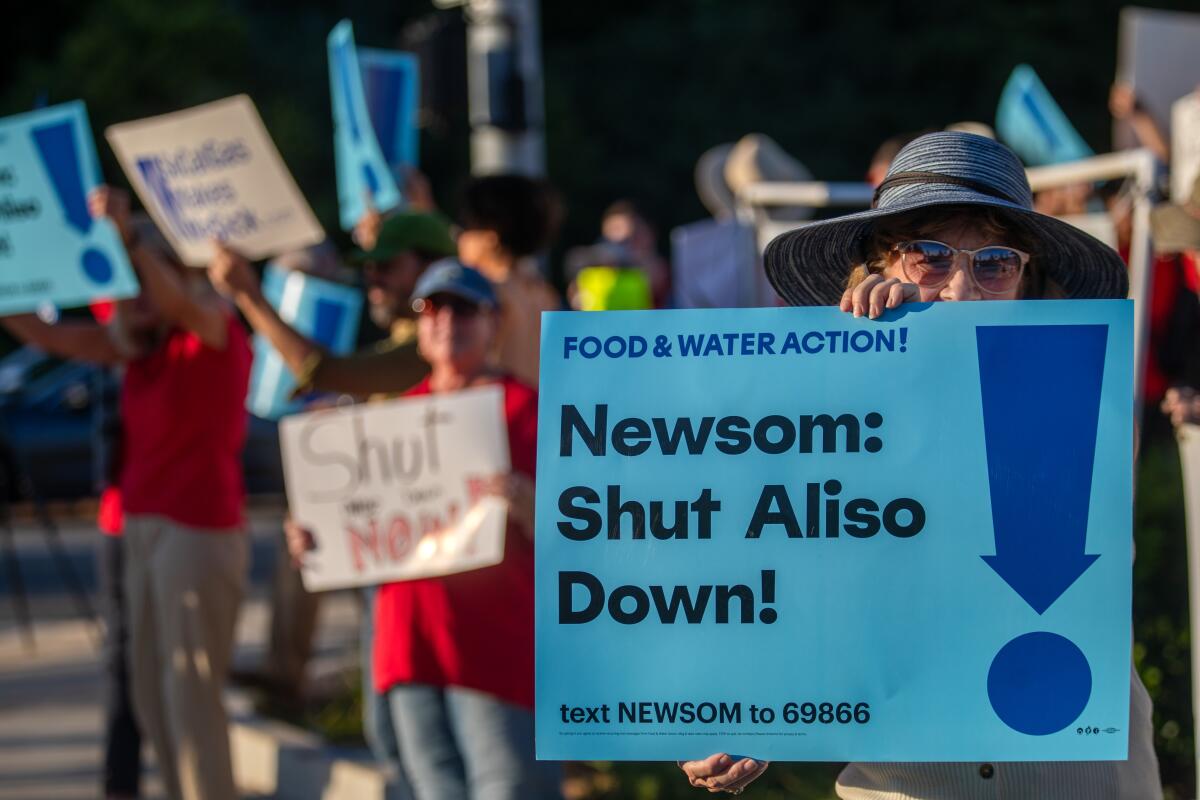
- Share via
State officials voted Thursday to let Southern California Gas Co. store far more fuel at the Aliso Canyon gas storage field, eight years after a record-breaking leak spewed more than 100,000 metric tons of planet-warming methane into the atmosphere and prompted thousands of San Fernando Valley residents to evacuate their homes for months.
The 5-0 vote by Gov. Gavin Newsom’s appointees on the California Public Utilities Commission angered many residents of Porter Ranch and other neighborhoods near Aliso Canyon, who see the gas field as a continued threat to their health and have called on Newsom to live up to his long-standing pledge to shut it down. The vote also frustrated climate change activists who have urged state officials to do more to help families replace gas appliances with electric heat pumps and induction stoves.
Newsom’s appointees said they agreed with an analysis presented by SoCalGas — and endorsed by commission staff — finding that more fuel storage at Aliso could lead to lower gas and electricity costs for Southern California residents this winter.
Toward a more sustainable California
Get Boiling Point, our newsletter exploring climate change, energy and the environment, and become part of the conversation — and the solution.
You may occasionally receive promotional content from the Los Angeles Times.
It’s been two years since the Public Utilities Commission raised the storage cap at Aliso Canyon — which had been cut after the methane leak — to 41 billion cubic feet. Now the agency has upped the limit to the 68.6 billion cubic feet requested by SoCalGas and its sister utility, San Diego Gas & Electric — the maximum amount deemed safe by another state agency.
Alice Reynolds, the commission’s president, said the decision “is not about using more natural gas or allowing the use of more natural gas.” She said her agency and others are working to reduce reliance on the fossil fuel, by distributing rebates for electric appliances, eliminating subsidies for new gas hookups and ordering utilities to buy more renewable electricity.
But none of those steps have changed the reality that we still need gas.
“We’re in a transition period,” Reynolds said. “Frankly, we’re not there yet. And we face many challenges.”
The Public Advocates Office, an independent arm of the Public Utilities Commission that looks out for consumers, supported the decision. But every one of the three dozen people who offered comments on Aliso Canyon before the vote felt differently, many of them flabbergasted that the Newsom administration hasn’t made shutting down the storage field a higher priority.
“My mind is just blown that we’re actually talking about this again,” Jane Fowler, a Granada Hills resident and co-founder of the Aliso Moms Alliance, told the commissioners. “We’re trying to get off fossil fuels for our future, for everyone’s future. Why would we be going backward? Why would we make ourselves more dependent on poison?”
Or as dozens of Porter Ranch residents told Newsom in a recent letter: “This facility represents a clear and present danger.”
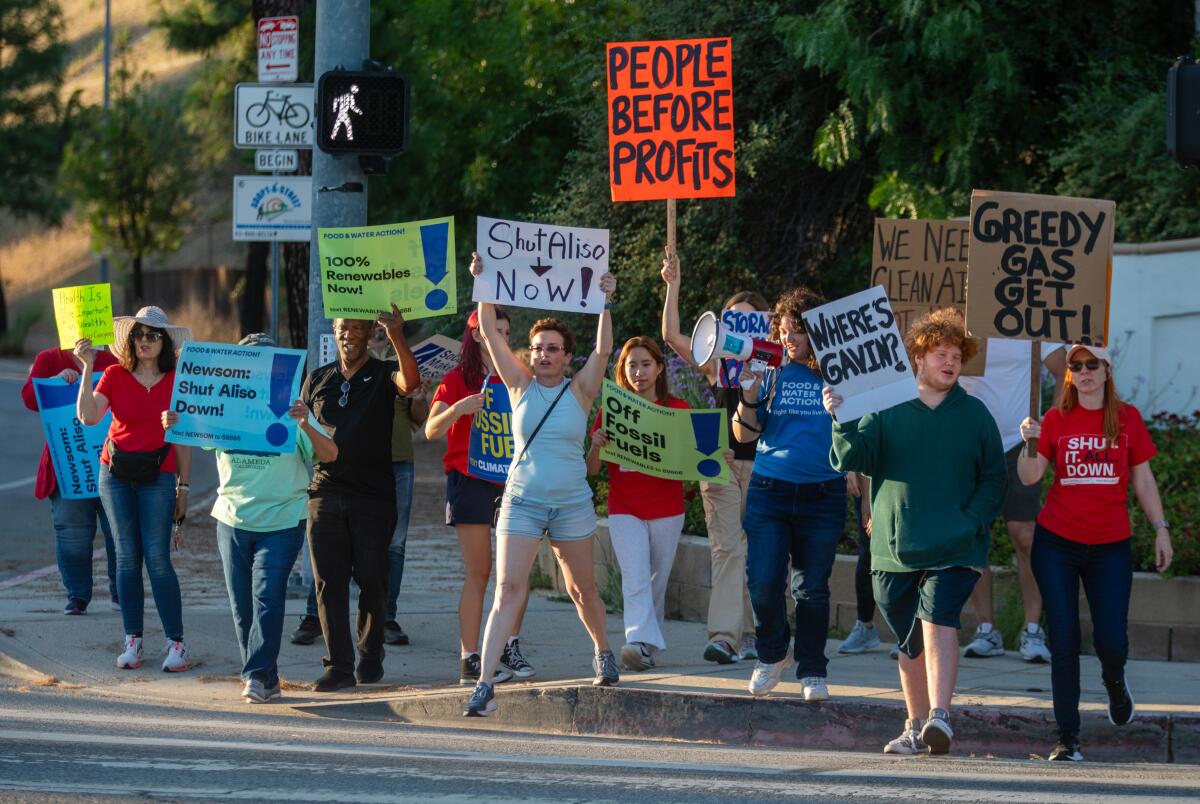
Thursday’s vote was the latest example of the challenges California faces on its road to 100% clean energy.
Phasing out fossil fuels should be plenty affordable in the long run, while saving millions of lives globally thanks to reduced air pollution and climate damage, studies have found. But the next few years could be difficult. Already, politicians are struggling to keep the lights on without driving up energy bills — an especially tough task as global warming fuels more extreme weather.
California officials say they’re committing to ditching gas and slashing planet-warming carbon emissions — over time.
For now, Newsom’s appointees were motivated to raise the storage cap at Aliso after SoCalGas and SDG&E estimated that more fuel at the facility could result in savings between $200 million and $450 million for their customers — residential and otherwise — this winter. State officials agreed. They pointed to last winter’s unusually high gas bills, saying more fuel in reserve could help protect homes, restaurants and other businesses from higher bills in the event of another price spike on the open market.
“We have a long-term goal of electrification. We have a long-term goal of decarbonizing,” Rachel Peterson, the Public Utilities Commission’s executive director, said in an interview ahead of Thursday’s vote. “But in the meantime, we feel like we owe it to ratepayers to regularly monitor what’s going on, and to take proactive steps like this to mitigate that price volatility.”
For California to successfully fight climate change, the state’s politicians, business leaders and millions of residents will need to work a lot harder.
That analysis was cold comfort to Issam Najm, former president of the Porter Ranch Neighborhood Council.
For years, Najm has worked with energy analysts and climate activists to make the case that Aliso Canyon isn’t nearly as valuable as SoCalGas makes it out to be — for ensuring reliable energy or for keeping utility bills down. In recent weeks, he’s met with staff for each of the five commissioners, urging them to consider the toxic pollutants emitted by Aliso in relatively small amounts even during normal operating conditions — including benzene, formaldehyde and trichloroethylene, all of which can cause cancer.
“This decision is not about numbers and not about dollars. It is about people’s lives,” Najm said.
In an email, SoCalGas spokesperson Chris Gilbride described the utilities commission’s plan to increase gas storage at Aliso “a prudent step that would help advance our shared goal of maintaining energy reliability at just and reasonable rates.”
The controversial storage facility is nestled in the Santa Susana Mountains just outside L.A. city limits, at the site of a depleted oil field along the northern edge of the San Fernando Valley. SoCalGas buys gas on the open market and pumps it into the ground at times of year when demand and prices are low, then pumps it back up to send to customers when demand is higher.
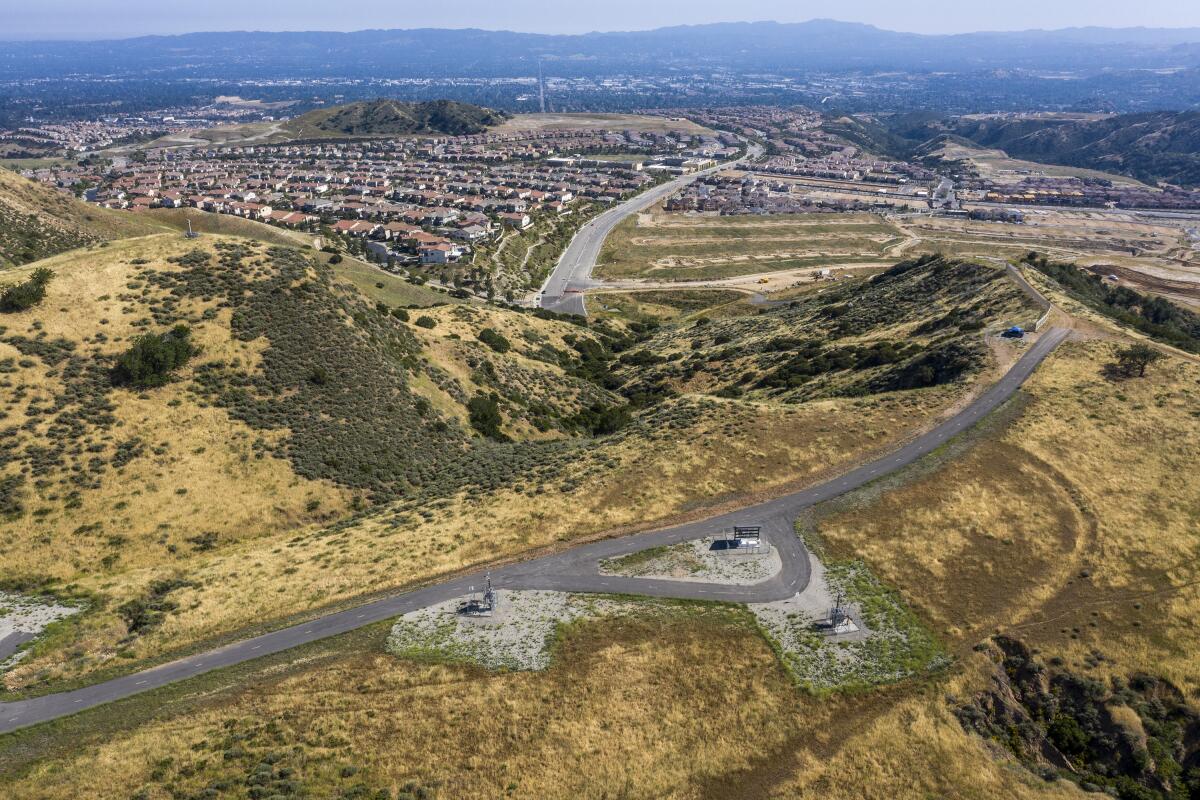
Aliso is especially valuable during the winter, when lower temperatures prompt homes and businesses to switch on gas-fueled space heaters. It can also be useful over the summer, when gas plants fire up to supply electricity for air conditioners.
The storage field’s existence was blasted into the public consciousness in October 2015, when a ruptured well started releasing methane and toxic chemicals, adding to the climate crisis and sickening local families. The leak lasted nearly four months — in part because a subsidiary of oil services giant Halliburton hired by SoCalGas to get the blowout under control failed to use computer modeling to design most of its well-kill attempts, according to an independent analysis ordered by state officials.
Ever since, many nearby residents have rallied to shut down Aliso and replace it with clean energy. They were encouraged when Newsom said in 2019 that he wanted to “fast track” the facility’s closure, and when he wrote to the Public Utilities Commission’s then-president a few months later, asking her to “expedite planning” for replacing and closing the storage field.
Asked where the governor stands now, spokesperson Alex Stack said in an email that Newsom “appreciates the [Public Utilities Commission’s] efforts to maintain affordable and reliable energy for ratepayers, and he continues to encourage the commission to expedite their work to permanently close the facility as part of California’s transition away from fossil fuels.”
That work reached a key point last September, when the commission issued a proposal showing how investments in renewable power, battery storage, electric appliances and energy efficiency could eliminate the need for Aliso Canyon in the next few years. The agency hasn’t yet decided whether to implement that proposal, although a decision could be coming this spring.
For many environmental activists, it’s long past time for Newsom to step up and demand action.
As heat waves, hurricanes, wildfires, water shortages and rising seas grow deadlier and more destructive, acting on the climate crisis needs to be our top priority now, those activists say — not later. They want to see more aggressive action from Newsom — especially after he engineered a $1.2-billion plan to extend the life of three gas plants along the Southern California coast.
Longtime Porter Ranch resident Janice Nardella urged Newsom’s appointees to reject any storage increase at Aliso, saying her family “got very sick” during the 2015-16 methane blowout and continues to feel health effects from living nearby.
“They don’t need to increase the gas storage and endanger the health of many families and schoolchildren just to make a profit,” Nardella told the commission, referring to SoCalGas. “Make our health a priority over the wealth of a large corporation.”
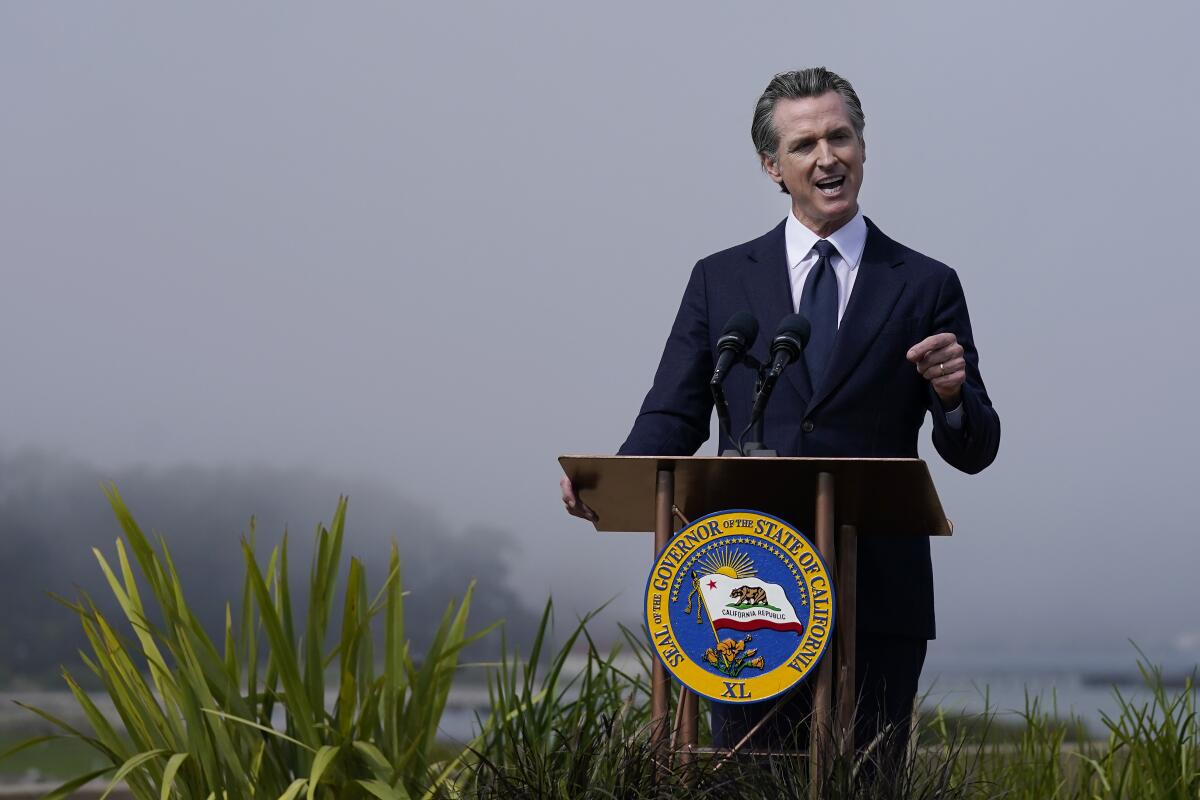
Local politicians have also questioned the need for additional storage at Aliso Canyon.
In a letter last week to Reynolds, the utilities commission’s president, 13 state lawmakers said they were “extremely disappointed and frustrated” by the agency’s proposal. They noted that natural gas markets “are inherently volatile, complex and susceptible to market manipulation,” writing that storage alone “does not provide a suitable hedge” against high gas bills for families.
“While the state has forward-facing policies to decarbonize its energy supply and reduce greenhouse gas emissions, having a top state energy agency recommending increasing natural gas storage sends the wrong signal,” the lawmakers said.
SoCalGas continues to face new legal fallout from the Aliso Canyon blowout. The law firm Engstrom, Lipscomb & Lack has filed several claims — the most recent in early August — on behalf of about 75 children and young adults for whom the statute of limitations hasn’t yet expired. Any settlement reached as a result of those suits would be on top of the $1.8-billion agreement that SoCalGas reached with attorneys for more than 35,000 adult plaintiffs two years ago.
The oil giant was hired by Southern California Gas Co. to end the blowout. It couldn’t get the job done.
Despite those ongoing liabilities, SoCalGas has a strong financial incentive to keep Aliso Canyon open.
The storage field was worth $958 million to parent company Sempra Energy last year, according to a financial filing. As long as it stays in operation, SoCalGas customers will be on the hook to pay off the company’s investment — plus shareholder profits.
There’s one scenario, though, under which the utility has suggested it would consider shuttering Aliso.
Early last year, SoCalGas released a proposal to build a massive green hydrogen project called Angeles Link, which could include hundreds of miles of pipelines to bring the clean-burning fuel to power plants, factories and the ports of Los Angeles and Long Beach. If approved by the Public Utilities Commission, all that hydrogen could replace much of the fossil gas burned in the L.A. Basin today — and potentially help “facilitate the ultimate closure” of Aliso Canyon, SoCalGas has said.
The Angeles Link proposal — which would be paid for by SoCalGas customers and could cost billions of dollars — has spurred mixed reactions from environmentalists. Some climate and clean energy advocates say the project could play a valuable role in phasing out fossil fuels without causing blackouts or higher energy bills. Others see it as a costly distraction from more practical solutions less aligned with the gas company’s business model, including solar panels, wind turbines and battery storage.
Those differences of opinion could be on full display in Sacramento over the next two weeks.
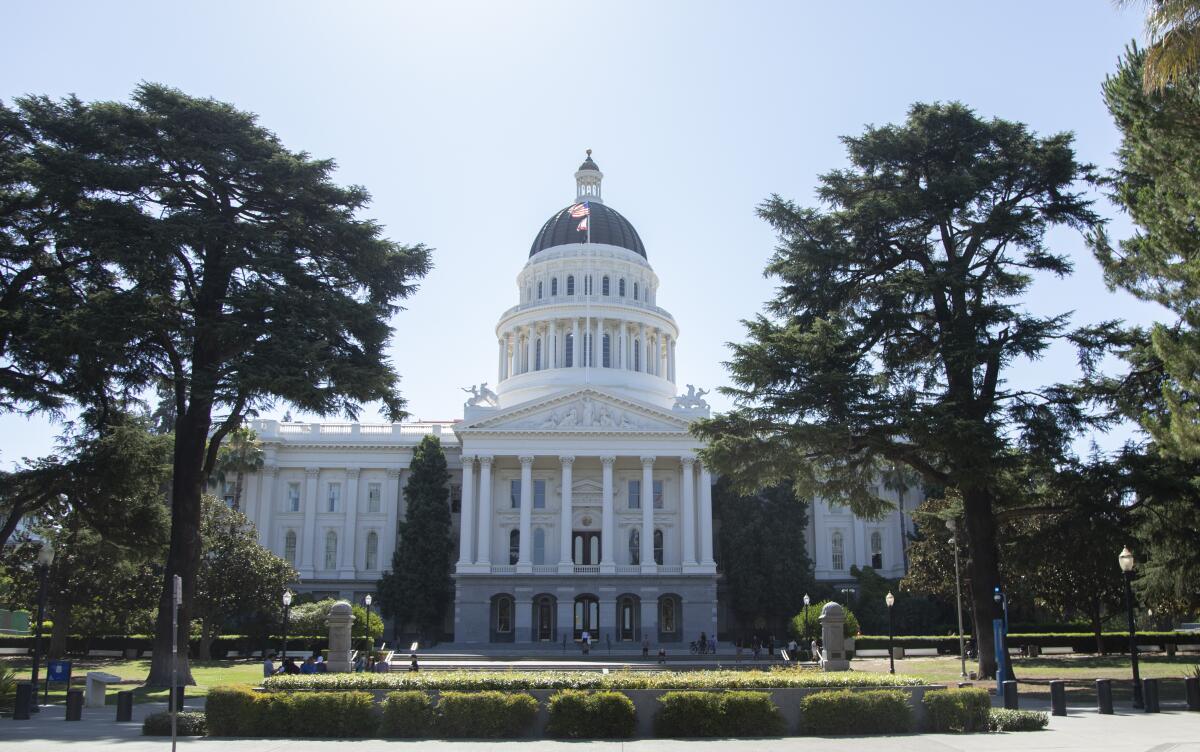
Ahead of a Sept. 14 deadline for state lawmakers to pass legislation this session, proposed language has been circulating for a last-minute bill that would help companies get permits to build hydrogen projects such as Angeles Link more quickly.
Although SoCalGas declined to say if it’s behind the proposal, spokesperson Brian Haas said in an email that the company “is encouraged by the robust discussion around the role that hydrogen will play in achieving California’s climate and clean energy goals and looks forward to supporting future legislation to bring us closer to achieving them.”
Whether or not Angeles Link gets built, local officials will probably keep pushing to shut down Aliso Canyon — as well as another SoCalGas underground storage field in Playa del Rey, which holds far less gas than Aliso but is located in a much more densely populated neighborhood on L.A.’s Westside. The Los Angeles City Council has called on state officials to close both facilities.
Our oceans. Our public lands. Our future.
Get Boiling Point, our new newsletter exploring climate change and the environment, and become part of the conversation — and the solution.
You may occasionally receive promotional content from the Los Angeles Times.
State Sen. Henry Stern, a Democrat whose district includes Porter Ranch, said he understands why Newsom and his appointees have thus far declined to shut Aliso Canyon — and why they’ve supported extending the lives of controversial gas plants.
The governor, Stern said, sees those fossil-fueled facilities as insurance — tools to make sure our air conditioners keep blowing and utility bills don’t rise as the state continues to invest billions in renewable energy. Eventually, we’ll have enough clean power to ease off fossil fuels — but until then, it’s crucial to avoid a political backlash that could derail climate progress.
Or at least, that’s how Stern understands Newsom’s thinking. He said he sees the logic but worries the strategy could backfire — if the gas plants don’t function as expected during heat waves, for instance, or if Aliso Canyon suffers additional leaks.
“This isn’t the most reliable kind of reliability,” he said.

Even if everything works as expected, Stern sees Aliso Canyon as a continued health threat that needs to go — and a reminder of the value in electric appliances that don’t pollute the planet’s climate or the air in our homes. He was frustrated a few weeks ago when the utilities commission announced a legal settlement that saw SoCalGas admit to just one count of wrongdoing stemming from the Aliso leak — and made just $71 million available for Porter Ranch residents and others to replace their gas appliances.
The settlement will take effect just over a week from now — unless someone objects. Stern is considering filing an appeal.
“I have a real problem with the lack of admission of guilt,” he said.
- Share via
Watch L.A. Times Today at 7 p.m. on Spectrum News 1 on Channel 1 or live stream on the Spectrum News App. Palos Verdes Peninsula and Orange County viewers can watch on Cox Systems on channel 99.
Toward a more sustainable California
Get Boiling Point, our newsletter exploring climate change, energy and the environment, and become part of the conversation — and the solution.
You may occasionally receive promotional content from the Los Angeles Times.


